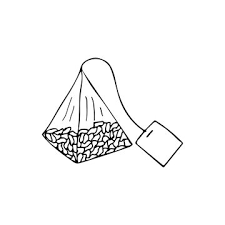Flowers are a beautiful staple of spring; they look pretty, they smell pretty, and some of them even taste just as good as they appear. There are many tea blends on the market that have some sort of dried flower or another added in whether it is to offer a hint of sweetness or simply to create a more aesthetic looking tea. Not to mention, dried flowers also have plenty of health benefits as well. Hibiscus is one of the more popular ones because of its deliciously tart flavor and detoxifying properties, making it a great base for an herbal tea.
The flowers I will be focusing on are ones that have recently been gaining a lot of attention in the holistic world. The first one that comes to mind is calendula. Calendula is somewhat of a "super flower" especially in skin care. More often than not you will find plenty of tea blends--caffeinated and herbal--with hints of the bright yellow petals peeking through the tea leaves. Calendula offers a subtle added sweetness to these blends and a pop of color that surely draws the eye.
When it comes to natural skincare, calendula has gained much notoriety mainly because of its anti-inflammatory and anti-microbial properties. It is an excellent botanical to promote wound healing and may even be a great anti-fungal agent. Calendula taken as tea is an amazing source of antioxidants. There are even studies that show it could potentially help with regulating menstrual cycles.
Chrysanthemum flowers are not as frequently used in tea blends as calendula, but they have been used in herbal Chinese medicine for centuries and is usually made into tea all on its own. In China, chrysanthemum tea is incredibly popular as it is said to help "cool" the body down and fight inflammation.

Organic Chrysanthemum Flowers
Chrysanthemum tea on it's own can get pretty bitter, so it is recommended to add a bit of honey or sugar if needed.
In skincare, chrysanthemum is typically found in facial toners due to its astringency, but is also mild enough where it is beneficial for sensitive skin types. It is also found frequently in eye creams and facial oils.
Lastly, another flower that has been extremely sought out the past year is butterfly pea flower. The appeal of this botanical is the brilliant blue color it turns whatever it is being steeped in. As a tea, while the color is beautiful and vibrant, there is not much of a flavor which is why it is mostly used purely for its color. Butterfly pea is also very sought out in the mixology world as another coloring agent for fun cocktails.
Butterfly Pea Flowers
As far as benefits go, butterfly pea is an excellent digestive aid as it relaxes the stomach after eating and can potentially fight off parasites in the gut. There are studies being done to show the benefits of this flower for diabetics since it's believed to help regulate blood sugar levels. Topically, butterfly pea flower may help with anti-aging and may improve overall skin texture and tone.
All three of these flowers can be found on our 💻 website and in store.
This information has not been evaluated by the Food and Drug Administration. These products are not intended to diagnose, treat, cure, or prevent any disease. For educational purposes only.











